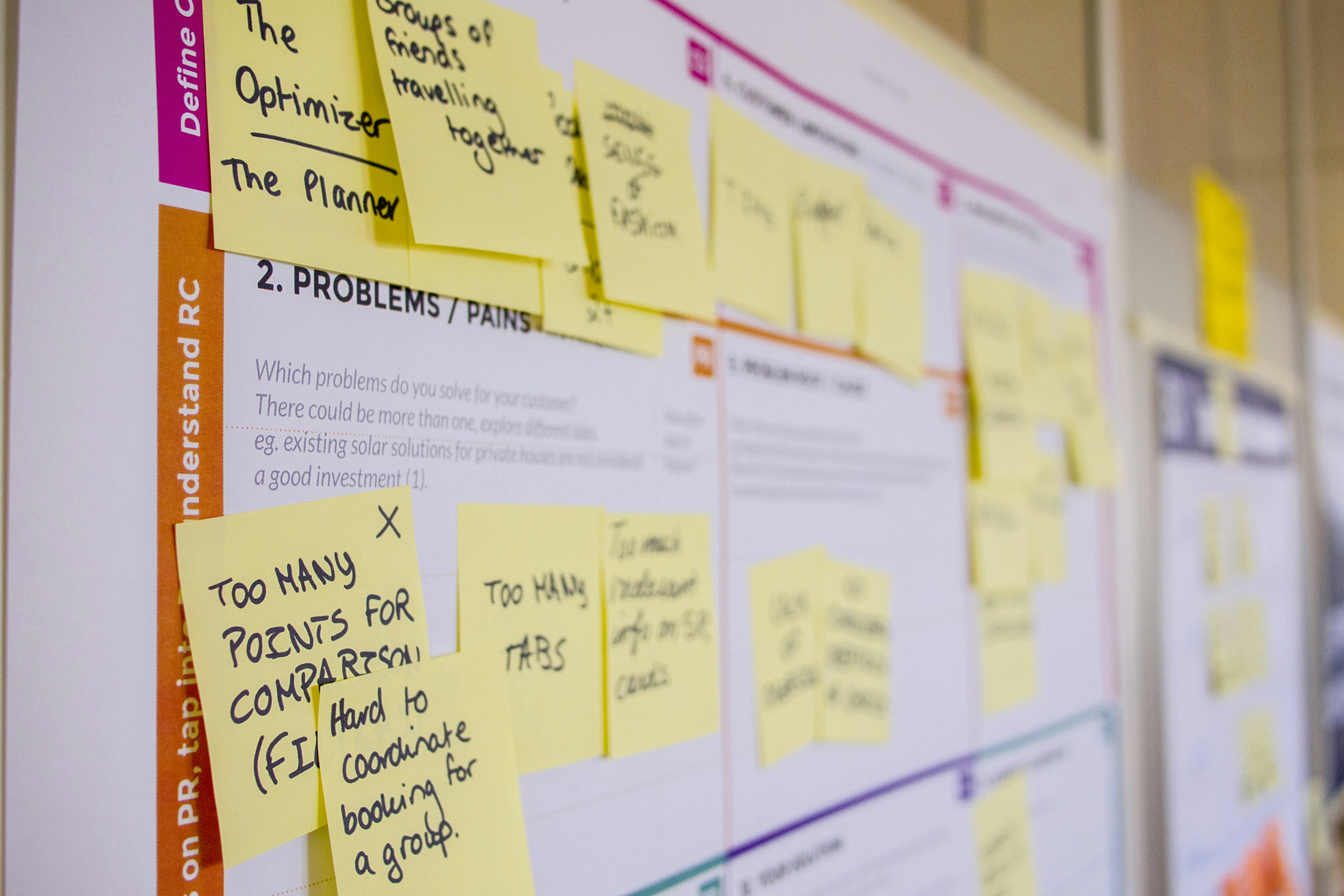Technological Factors Affecting Business: Complete Guide to Digital Transformation Impact

The business world has changed forever in the digital age. 92% of companies say technology directly affects their competitive position, so understanding technological factors affecting business is crucial for survival and growth.
These external forces shape everything from day to day operations to long term planning, bringing both opportunities and challenges for businesses across all industries.
Technological factors are one of the most dynamic elements in the business environment, able to change entire sectors overnight. From artificial intelligence changing customer service to cloud computing enabling global collaboration, these innovations are redefining how companies operate, compete and deliver value to customers. This guide looks at the key technological influences shaping modern business and provides a strategic framework for navigating digital transformation.
What are Technological Factors in Business
Technological factors are external influences from technological innovations, infrastructure and digital tools that shape how businesses operate, deliver products or services and reach customers. Within the pestle analysis framework—Political, Economic, Social, Technological, Legal and Environmental factors—technological elements are one of the most rapidly changing external factors businesses must continuously monitor and adapt to.
These factors include specific technologies like machine learning, cloud services and mobile technology as well as broader trends like digital transformation, automation and the move to services online. The scope goes beyond individual tools to include technological infrastructure, innovation rates and the changing expectations of customers who are demanding digital experiences.
The practical relevance of technological factors becomes clear when you consider their dual nature: they create opportunities for growth and efficiency and threats of obsolescence and disruption. New technologies can help companies reduce costs, access new markets and enhance customer experiences. But they also bring challenges like implementation costs, cybersecurity risks and workforce adaptation.
Companies that monitor technological changes and adapt quickly gain a big competitive advantage. For example companies that adopted e commerce early on captured market share, while those that were late to the party struggled to catch up. This is why staying competitive requires continuous technological assessment and strategic planning.
Core Technology Areas Impacting Business Operations
Modern businesses are influenced by various technological domains that often intersect and amplify each other’s impact. Cloud computing enables big data analytics which artificial intelligence then processes to generate insights for decision making. Understanding these connections is key to assessing the overall impact on business processes and developing a technology strategy.The transformation impacts businesses through several areas, each with its own characteristics and business implications:
-
Automation and Robotics: Technologies replacing or augmenting manual processes across manufacturing and administrative functions
-
Artificial Intelligence and Machine Learning: Systems enabling pattern recognition, prediction and autonomous decision making
-
Digital Infrastructure: Telecommunications networks, cloud platforms and connectivity solutions supporting core business functions
-
Data Analytics and Business Intelligence: Tools for processing large datasets and extracting insights
-
Cybersecurity Technologies: Systems protecting digital assets and customer information from threats
-
Collaboration and Communication Platforms: Tools for distributed teams and remote work
To assess the impact of technological change businesses use frameworks that consider cost, scalability, workforce, risk mitigation and return on investment. This structured approach helps prioritise technology investments and manage implementation risks.
Automation and Artificial Intelligence
Automation technologies, particularly robotic process automation, are changing manufacturing environments and administrative processes across many industries. In modern production facilities robots perform repetitive tasks like assembly, welding and quality inspection with precision that often exceeds human capabilities. This frees up human workers for higher value activities and brings significant productivity gains and cost savings.
When we worked with a mid-size manufacturing client, they initially rushed into automating their entire assembly line, expecting immediate cost savings. What they found instead was a need for careful integration and staff retraining. Not every task is suited for automation, and sometimes human production lines still outperform entirely machine ones on flexibility and quality control. The lesson? Don’t be seduced by shiny tech—start with a workshop to identify where automation truly adds value.
The telecommunications sector is a great example of AI in action through customer service automation. Telephone service providers now use AI powered chatbots to handle millions of customer queries annually, automatically resolving routine questions and escalating complex issues to human agents. This improves customer satisfaction through faster response times and reduces operational costs.
Not every AI tool is worth adopting—here’s where we draw the line: if the technology adds complexity without clear benefits or increases human error risk, it’s better to hold off. We’ve seen too many businesses rush into automation without a strategy, only to face costly fixes later.
Supply chain optimisation is another key area where machine learning algorithms analyse historical and real time data to predict demand fluctuations. Companies like Amazon use these capabilities for dynamic inventory management, automatically adjusting stock levels based on seasonal patterns, promotional activities and market trends. This sophisticated approach minimises overstocking and stockout situations and optimises warehouse efficiency.
The workforce implications of automation and artificial intelligence are significant. While these technologies bring operational efficiencies they also change job requirements and eliminate manual roles. Businesses must invest in retraining programs and develop new skill sets around programming, analytics and system monitoring to support their evolving operational needs.
Cost savings from automation are well documented across industries. Research shows robotic process automation can reduce process costs by 30-60% compared to traditional manual approaches, although results vary by industry and implementation quality. But businesses face challenges like high upfront investment requirements, integration complexities with existing systems and employee resistance to change due to job security concerns.
Digital Infrastructure and Connectivity
Fifth-generation wireless networks are a game changer for real-time data processing required for internet of things implementations across logistics, manufacturing and smart city initiatives. The ultra-low latency of 5G enables applications that require instant response like autonomous vehicle coordination and massive sensor networks in industrial environments.
Cloud computing platforms like Amazon Web Services and Microsoft Azure provide on-demand scalability and operational resilience that traditional on-premises infrastructure can’t match. Businesses can deploy new customer facing applications or advanced analytics solutions without investing in expensive physical data centres. Industry analysts predict public cloud spending will reach $679 billion in 2024 as adoption grows across every industry.
Internet connectivity is the foundation for explosive e commerce growth, opening up global markets to small businesses and changing distribution models and customer access patterns. Robust connectivity infrastructure also underpins remote work which accelerated dramatically during recent global events and is shaping the future of work.
Cybersecurity technologies are now part of digital infrastructure as data breaches can cause severe financial and reputational damage to businesses. Multi-factor authentication, encryption protocols and intrusion detection systems are now essential layers of protection. According to recent research the global average cost of a data breach is $4.45 million, highlighting the importance of strong cybersecurity measures.
Collaboration platforms including video conferencing, instant messaging and project management tools have changed the workplace and enabled access to global talent pools. These technologies support distributed teams but require new digital leadership skills and cybersecurity protocols to protect business information.
Data Analytics and Business Intelligence
Big data processing allows businesses to analyse vast datasets from transaction records, social media interactions, IoT sensors and other sources to understand customer behaviour and optimise operations. Retail businesses use these analytics to identify purchasing patterns, forecast demand and adjust merchandising strategies in real-time based on current market conditions.
Predictive analytics enables granular targeting in marketing campaigns and more efficient inventory management across supply chain operations. Companies that use predictive analytics report higher profit margins than those that only use traditional analysis methods, demonstrating the commercial impact of data driven decision making.Real-time dashboards supported by business intelligence platforms are now essential for managers, providing instant visibility into key performance indicators and operational bottlenecks. This enables more agile, data driven decision making by providing insights exactly when needed rather than requiring manual report generation.
Customer relationship management systems use advanced analytics to personalise marketing, track customer lifecycle stages and predict churn risk with increasing accuracy. This approach leads to measurable increases in customer retention rates and average transaction values for businesses that use advanced CRM effectively.
Data privacy regulations such as the General Data Protection Regulation in Europe and similar legislation in other jurisdictions are now top of mind for how businesses collect, store, analyse and share customer information. Non-compliance risks include financial penalties, legal liabilities and reputational damage that can affect long term business viability.
Industry-Specific Technology Impact Analysis
The impact of technology varies significantly across different industries, driven by regulatory environments, customer expectations, operational requirements and the nature of products or services offered. Understanding these industry specific patterns helps businesses benchmark their technology adoption against industry leaders and identify opportunities for competitive differentiation.
Retail and E-commerce Transformation
Radio Frequency Identification technology has revolutionised inventory management across the retail industry, providing end-to-end visibility from warehouse storage to final sale. Major retailers implement RFID systems to reduce inventory shrinkage, eliminate stockout situations and optimise labour allocation for inventory management tasks.
Mobile payment systems and digital wallets are transforming the customer checkout experience while reducing transaction processing times and improving operational efficiency. These technologies support contactless payment preferences that are increasingly important to customers while also providing retailers with transaction data for analytics purposes.
Augmented reality applications allow customers to virtually try before they buy, effectively bridging the online and offline store experience. Furniture retailers allow customers to see how products will look in their home, while fashion brands offer virtual try on capabilities that reduce returns and improve customer satisfaction.
Scan-as-you-shop technology further simplifies retail operations by allowing customers to scan items using mobile apps while shopping then complete the purchase without traditional checkout processes. This reduces waiting times, improves customer convenience and enables retailers to optimise staffing across different store functions.
These technologies bring benefits to both retailers and customers but also accelerate the transformation of traditional retail employment patterns. Many roles require new technical skills while some become redundant as automation handles manual processes.Three-dimensional printing technology enables rapid prototyping and customised product creation, reducing development costs and lead times for special components. Manufacturing companies use additive manufacturing to create complex geometries that would be impossible or cost prohibitive using traditional methods.
Internet of Things sensors in manufacturing equipment provide real-time performance monitoring that enables predictive maintenance strategies. This minimises unexpected downtime, extends equipment life and optimises maintenance scheduling based on actual usage patterns rather than arbitrary time intervals.
Blockchain technology for supply chain transparency helps manufacturers track components from raw materials to final delivery, reducing fraud risk and ensuring quality standards. This increased traceability is particularly valuable in regulated industries such as pharmaceuticals and food production where compliance is critical.
Smart factories are the convergence of robotics, artificial intelligence and IoT technologies, creating adaptive production environments where human workers collaborate with intelligent machines. These facilities can reconfigure production lines for different products while maintaining high efficiency and quality standards.
Computer vision systems automate quality assurance processes, improving inspection speed and accuracy while reducing the risk of defective products reaching customers. These systems can detect subtle variations that human inspectors might miss, contributing to higher overall product quality and reduced warranty costs.
Positive vs. Negative Technology Impacts on Business
Technological advancements bring a complex mix of opportunities and challenges that businesses must navigate carefully. Understanding both positive and negative impacts helps with more informed decision making around technology investments and implementation strategies.
Technology Benefits for Business Growth
Automation delivers significant cost savings by eliminating manual repetitive tasks and improving operational efficiency across multiple business functions. Businesses report substantial productivity improvements following successful automation implementations, with many achieving return on investment within the first year of deployment.
Digital marketing platforms and global connectivity enable market expansion opportunities that were previously only available to large corporations with deep pockets. Small businesses can now reach customers worldwide through e commerce platforms, social media marketing and digital advertising that levels the playing field.
Personalisation capabilities powered by data analytics and artificial intelligence deliver better customer experiences. Businesses can offer targeted recommendations, customised product offerings and responsive customer service that builds loyalty and increases customer lifetime value.
Early adoption of emerging technologies provides competitive advantage through operational efficiency, better customer service or innovative product offerings that differentiate businesses from competitors. Businesses that integrate new technologies before widespread adoption can capture market share and establish leadership positions.
Data driven decision making improves strategic planning and operational responsiveness. Businesses with access to real-time analytics and predictive insights can respond faster to market changes and optimise resource allocation based on facts rather than intuition.
Technology Challenges and Risks
Implementation costs for advanced technologies require significant upfront investment in software, hardware, training and system integration. Many organisations underestimate the total cost of ownership which includes ongoing maintenance, upgrades and support requirements that extend well beyond initial deployment.
Cybersecurity threats have increased dramatically as businesses become more connected, exposing organisations to data breaches, ransomware attacks and other malicious activities. The frequency and sophistication of these threats are increasing, requiring ongoing investment in security measures and staff training.
Workforce displacement concerns arise as automation and artificial intelligence eliminate certain job categories while creating demand for new skill sets. Organisations must invest heavily in retraining programs and change management to help employees adapt to changing role requirements.
Technology obsolescence is an ongoing risk as rapid innovation cycles can make recent investments obsolete. Companies may find themselves locked into platforms that become incompatible with newer systems, requiring costly migrations or limiting future technology options.
The digital divide affects both customer access and talent acquisition, as not all geographic regions or demographic groups have equal access to latest technologies. This disparity can limit market reach and create challenges in recruiting technical talent.
Failed technology implementations offer valuable lessons on the risks of poor planning and execution. High profile failures such as major airline system outages that disrupt operations for days and cost millions in lost revenue demonstrate the importance of robust testing, backup systems and comprehensive contingency planning.
Strategic Framework for Technological Change
Successfully navigating the technology landscape requires a proactive, structured approach that balances innovation opportunities with risk management. Organisations need frameworks for assessing technological change, prioritising investments and implementing solutions that align with business objectives.
Technology Assessment and Planning
Regular technology audits help organisations benchmark current systems against best practice while identifying opportunities for process improvement and competitive differentiation. These assessments should evaluate not only current capability but also scalability, integration potential and alignment with long term strategic goals.
Competitive analysis involves tracking how industry leaders adopt and implement new technologies. This intelligence helps organisations anticipate shifts in competitive dynamics and identify emerging best practice that can be applied to their business.
Return on investment calculations for technology deployments must include both direct cost savings and indirect benefits such as customer satisfaction, operational flexibility and risk reduction. Full financial analysis should include migration costs, training expenses and business disruption during implementation phases.
Risk mitigation strategies involve phased deployment approaches that allow organisations to test technologies on a smaller scale before organisation wide implementation. This gradual approach helps identify issues while minimising operational disruption and financial exposure.Timeline should include realistic estimates for training, integration and user adoption. Successful technology implementations require time for change management activities to help employees understand and adopt new tools and processes.
Future Proofing Business
Monitoring emerging technology helps organisations stay informed about developments that impact their industry or business model. Key areas to watch are quantum computing, blockchain beyond cryptocurrency and AI across different business functions.
Skills development programs should focus on digital literacy, analytical thinking and adaptability rather than specific technical skills that will become obsolete. Building a learning culture that accepts continuous skill development helps organisations stay agile as technology evolves.
Partnerships with technology providers, academic institutions and innovation hubs can accelerate technology transfer and experimentation and share implementation risks and costs. These collaborations provide access to expertise and resources that would be too expensive to develop in-house.
Scenario planning involves developing plans for multiple technological futures, helping organisations prepare for different rates of change and disruption. This approach supports more flexible strategic planning that can adapt as things unfold.
Organisations that navigate technological change keep focus on customer value and use technology as an enabler not an end goal. This customer centric approach ensures technology delivers benefits not innovation for its own sake.
The Role of Fractional CIOs and CTOs
For many businesses, especially small to medium sized enterprises, hiring a full time CIO or CTO may not be feasible or necessary. That’s where fractional CIOs and CTOs come in. These experienced technology leaders work part time or project basis, providing strategic guidance and hands on expertise tailored to the company’s unique technological needs.
Fractional CIOs and CTOs help organisations identify the most impactful technological factors affecting business, develop technology roadmaps aligned to business goals and oversee digital transformation initiatives. By leveraging their broad industry experience they ensure technology investments are cost effective, scalable and future proof so companies can stay competitive in fast changing markets.
Additionally fractional technology executives bridge the gap between business and IT teams, facilitate collaboration and mitigate risks associated with technology change. They accelerate the adoption of modern technology and help businesses respond to emerging trends without the overhead of permanent executive hires.Need help with technology and want to get moving?










%20(1).jpg)